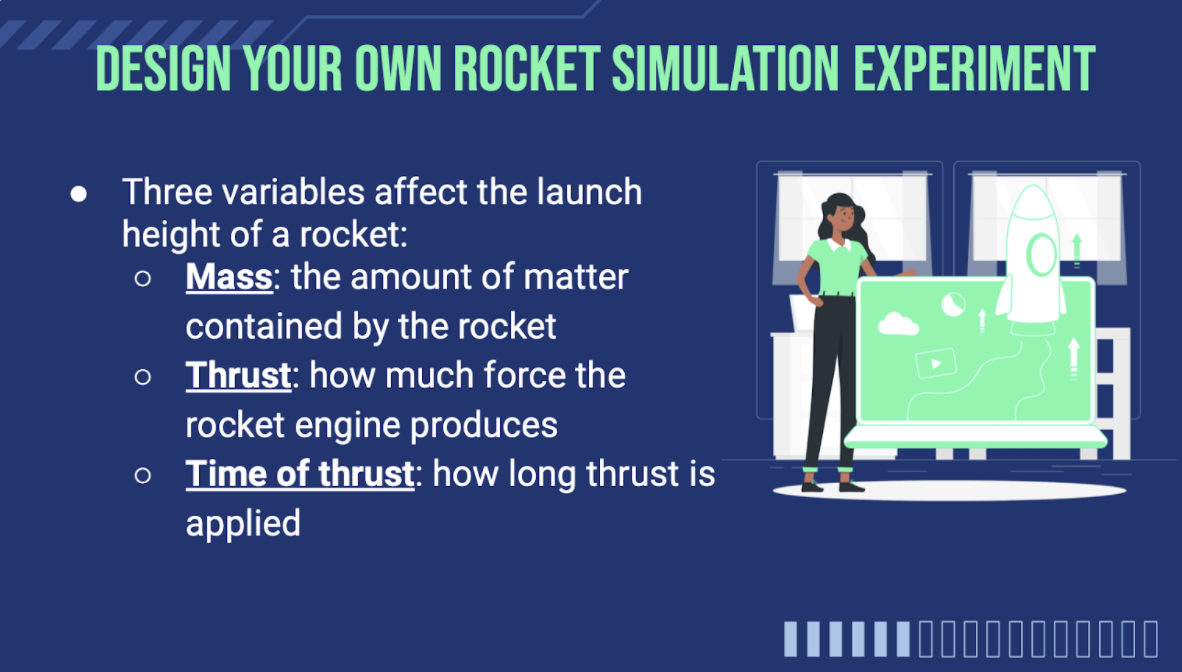12.2.20
Experiment Leaders: Clara Kirkvold and Sam Boland
Certain science experiments are too slow, too expensive, too dangerous, or too inaccessible to be performed in conventional settings. On November 30th and December 2nd, 2020, Mrs. Michelle Ross’s 6th-grade Astronomy class at Murray Middle school learned about how scientists employ simulations to navigate around these roadblocks during a virtual lesson with volunteers from Science for All. Students learned about the procedures scientists use to perform research before moving into a discussion about the similarities and differences between models and simulations. The objective of this lesson was to teach students about why simulations are useful and allow them to apply this knowledge firsthand in a rocket launch simulation.
Lesson leaders first discussed examples of models and simulations in everyday life, including the usage of models and simulations in popular space-themed movies: Hidden Figures and The Martian. Next, Clara and Sam presented simulations from their own personal research to teach the students about the practical applications of simulations. Clara’s example demonstrated that simulations have the power to predict the changing structure of molecules when constituent atoms are swapped out. Sam’s simulation taught how simulations of head injury can inform how the geometry of the brain affects which regions are damaged most during impact without having to perform dangerous experiments on humans.
Students were then given the opportunity to perform simulations of their own. Participants were guided through a rocket launch simulation experiment with three independent variables: mass, thrust, and time of thrust. The students were split into three teams, each tasked with determining how each variable affects the maximum rocket launch height. Science for All volunteers helped the students to design an experiment to learn this information and guided the participants through the simulation.
After performing their initial experiments, the classroom reconvened and a student from each group shared the results from their experiment. With their new knowledge from their experiments, students broke into groups again and were challenged to see which group could make their rocket fly the highest. One group was able to launch their rocket over 100,000 kilometers above Earth! Students that participated in this lesson learned about the variables that affect rocket launch performance without the time and cost of building a miniature rocket themselves.
Rocket simulation link: https://www.sciencelearn.org.nz/resources/407-rocket-launch-challenge
